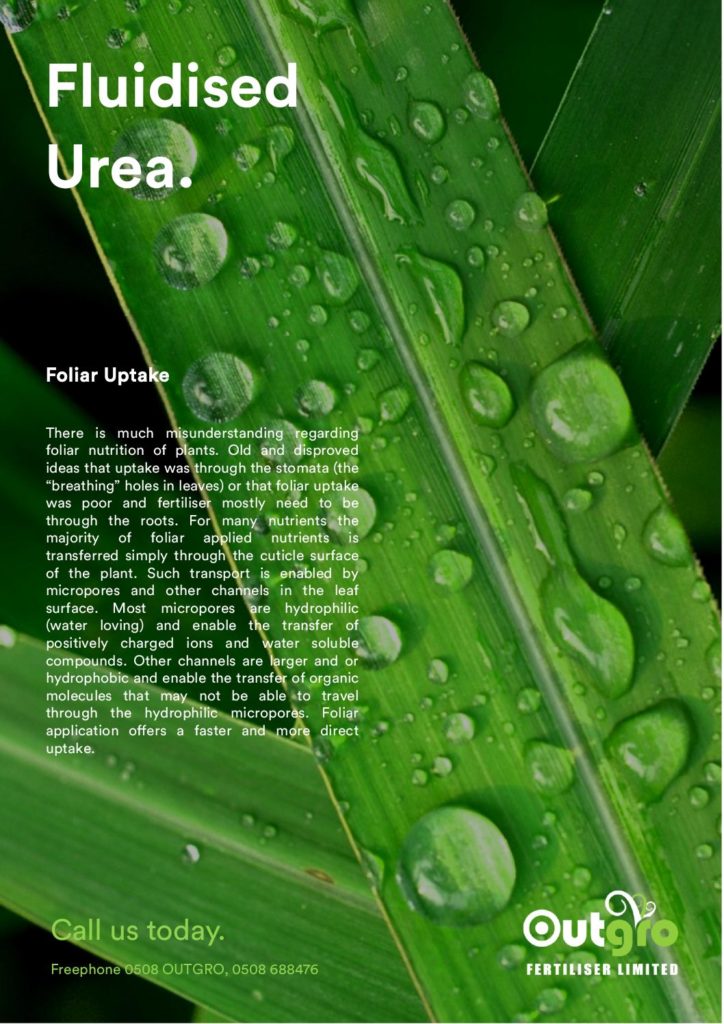Fluidised Urea
Urea through the Foliage
Urea is a particularly efficient form of nitrogen for
foliar uptake since the urea molecule can pass
through all leaf surface channels. Research has
shown that urea is rapidly taken up and once inside
the leaf is safe from volatilisation losses that
otherwise limits nitrogen response. The enzyme
urease operates naturally within plant shoots and
converts urea into available ammonium. That’s
exactly the form of nitrogen required for synthesis
of proteins and other essential compounds. And the
ammonium is in exactly the right place – in the
shoots of the growing plant. Uptake through the
leaf avoids the lag of uptake from the soil and
avoids the nitrate phase (the main form of nitrogen
uptake for most plants) during which leaching
losses may occur and from which the plant must
convert the nitrogen back into ammonium at great
cost to plant energy.
Trace Element Time
Foliar application of urea is a perfect opportunity to
deliver other elements and growth promoters that
can work synergistically with nitrogen uptake.
Trace elements can be added in small, low cost
amounts for the benefit of plant growth and animal
nutrition. Some such elements are much more
efficiently taken up through the foliage than
through the soil matrix. For instance soil uptake of
copper can be restricted by high pH, high organic
matter, and high levels of phosphorus, sulphur and
molybdenum. Foliar application of copper bypasses
those potential issues.
Another trace element, iodine, is essential for
animal nutrition and can be efficiently delivered to
plant foliage (even into fodder brassicas which can
otherwise challenge animal iodine nutrition). In
comparison, application of iodine to the soil is
generally ineffective at improving plant levels.
– Dr Tim Jenkins (printed with permission).



